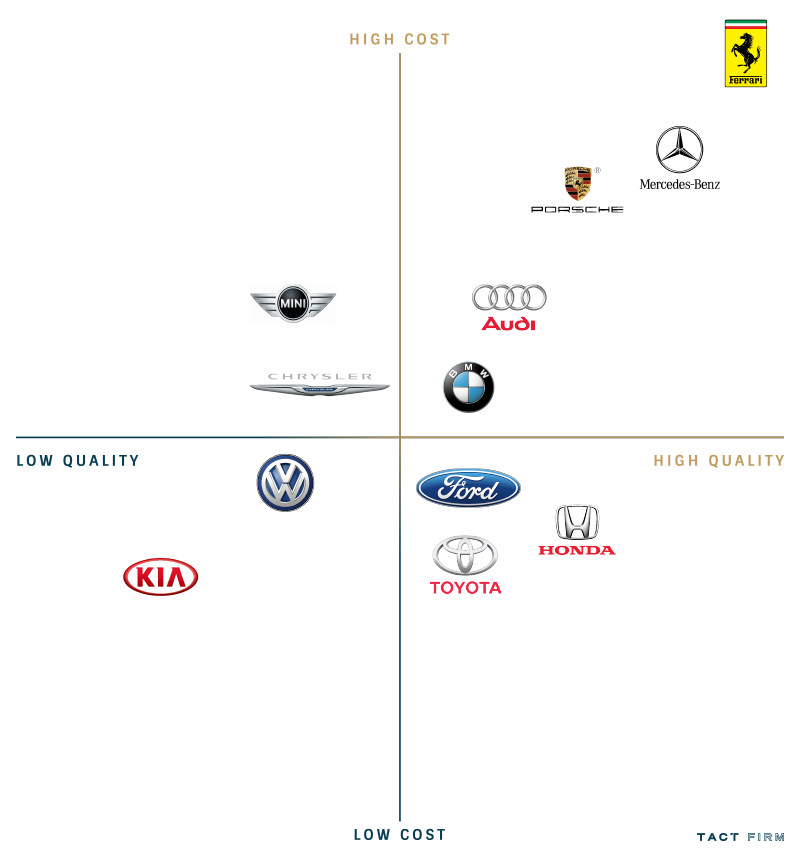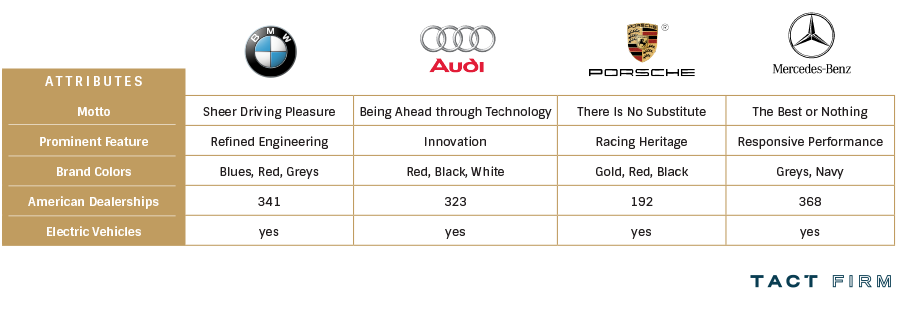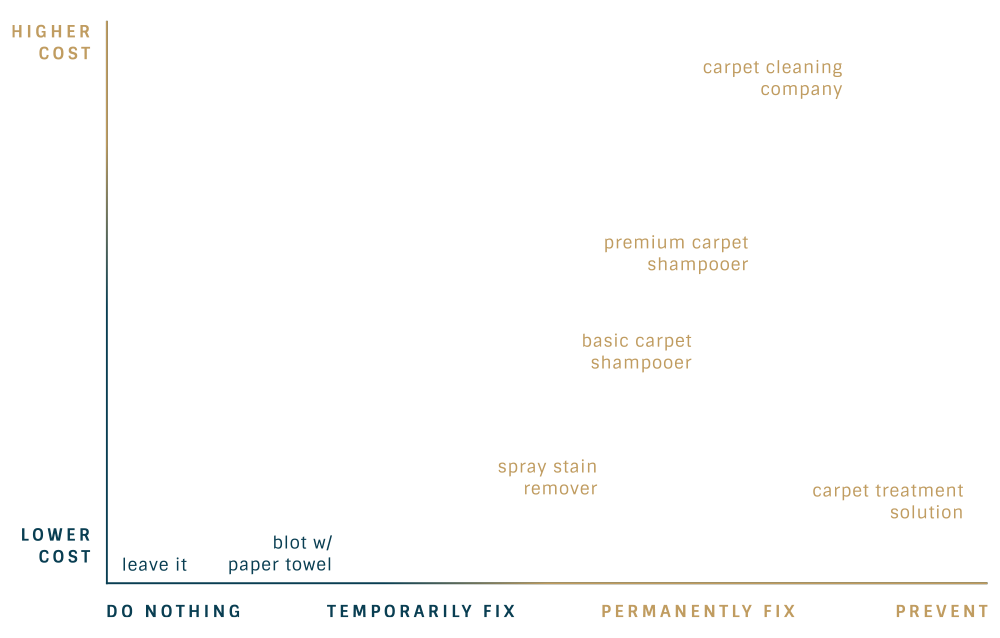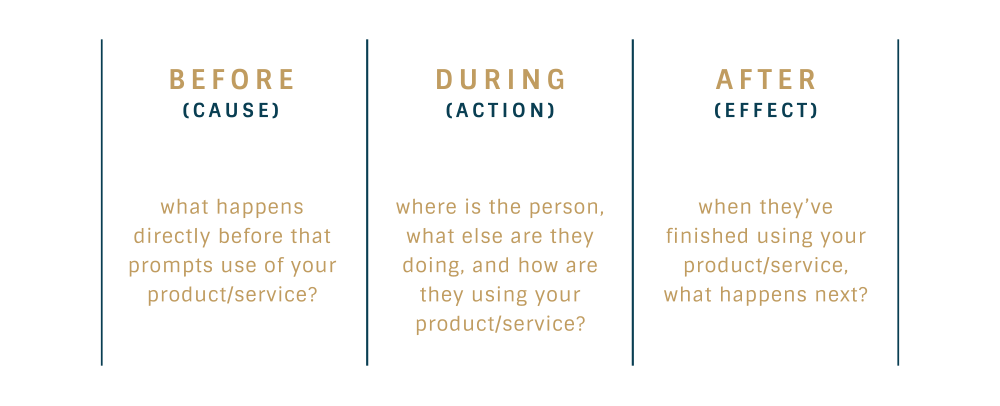Who’s in your Competitive Arena?
Learning Outcome:
A full understanding of competition types and how to determine all the areas in a Competitive Arena.

Do you know the direct competition, product substitutes and alternatives, complimentary solutions, and chain of buyers in your Competitive Arena?
Understanding all types of competition in your market may help you avoid the main reasons new businesses fail. The top reason is “no market need” for a product or service [1]. The second reason is running out of cash.
Even if you’ve set aside a good chunk of startup capital, you can waste it on unnecessary infrastructure. Companies run into problems when demand is much less than their supply. They overspend in capacity building but neglect creating demand, and the monthly excess overhead drains their profits before they initiate a revenue growth plan such as marketing.
So if you can create a market need and invest properly in customer foundations that help you grow optimally—you might be able to prevent those two main reasons of business failure.
Where to Compete vs How to Compete as a cannabis startup
80% of the variance in revenue growth is explained by choices of where to compete, with only 20% explained by choices about how to compete. [2]
By understanding where to compete, a cannabis business can expand along the value chain, enter new geographies, grow new products and services, use new distribution channels, move into the white space with a new business built around a strong capability, and/or address new customer segments, often by modifying a proven product or technology.
If you sell an identical product and to the same customers as your competitors, then the customer only has a price to compare. When you’re at that point, you end up increasing commoditization of your product and price wars commence, not to mention mimicking competitive moves and promotions.
In order to get out of that head-to-head trap, we need to think less on the transactional exchange of our product with a customer’s money (exchange value) and more towards the value created when the customer uses the product or service (use value). Is $10,000 a lot of money to exchange? Maybe, but it depends, right? Is $10,000 a lot of money to rent a house for a year while you’re waiting for your $1.2 million house to be built? Price is relative to the value of the outcome and priority of need.
Customers are often considering cost-in-use, or total cost of ownership as more important than purchasing price, thus suggesting that use value may be of greater interest relative to exchange value. [3]
A focus on use value means that cannabis brands need to create a deeper understanding of the user’s process in which they create value. The creation of value needs to be understood through the eyes of your target customers, examining all the activities the customer performs in using and maintaining a product throughout its life cycle, from seed to sale to disposal.
There are various tools and models we can use to map the Competitive Arena, which we will explore while we define each type of competition: direct & strategic groups, product substitutes & alternatives, complimentary solutions, and chain of buyers.
Direct Competition & Strategic Groups
These are the most obvious because they sell the exact same product or service you do. These competitors can be divided into Strategic Groups, which are companies within an industry that pursue a similar strategy. All industries have strategic groups ranked hierarchically on dimensions of price and performance.
We’ll illustrate this with car brands in our first model—a Positioning Map. Draw an X and Y graph with X being price and Y being performance. Price can go from the left at low cost to high cost on the right. Performance can go from lower quality on the bottom to higher quality at the top. Then let’s plot the car brands based on their attributes.

You’ll notice that brands tend to be grouped together in each quadrant. That would signify the Strategic Groups. There is a very clear luxury car group and an economy car group with a few scattered smaller groups. You can go even further and change the X and Y dimensions to attributes such as safety, speed, sales volume, number of offerings, styling, and more.
Most companies focus on improving their competitive position within their strategic group. The luxury brands are generally not paying attention to the economy brands. However, the key is to break out of this narrow tunnel vision by understanding which factors determine a customer’s decisions to trade up or down from one strategic group to another. Why would someone trade in their Ford Explorer for a Range Rover? Or conversely, what factors would make someone trade in their Range Rover for a Ford Explorer?
Let’s single out the luxury strategic group and create a Positioning Table. This shortened table compares attributes at each company to determine industry median standards by seeing what’s consistent across the board, and competitive advantages by seeing what each company executes that others do not.

As you can see, I only chose to list a handful but there can be a lot of attributes to examine so try to be exhaustive in order to get a full grasp of your competitors. Attributes can include qualitative website, product, service, or even performance ratings. Find what companies have in common as well as what sets each of them apart. This table compares companies as a whole but you can get granular and compare similar products to get a better idea of product features and benefits.
You can even repeat this exercise with other strategic groups with the intent of combining strengths from another group into yours. New insights can be made that might help figure out how a buyer might trade up from an economy car to a luxury car, or vice versa.
What Strategic Groups are in your industry? Why do customers trade up for the higher group or down for the lower?
Substitutes
These are products or services within an industry that have different forms but offer the same functionality, core utility, or solution. You spilled red wine on your carpet and now you’ve got a stain. You’d be surprised how many options you have, and each option is a substitute. Below you can see a continuum of general options.

You can do nothing or blot with a paper towel and leave the faded stain there. You can buy various types of stain remover (spray, paste, powder) or carpet cleaning devices (cordless, corded, handheld, bulky) and attempt to remove it yourself. Or you can hire a carpet cleaning company to completely remove the stain.
Now let’s plot these on the chart and add a Y dimension for cost. Now you can see the various levels of involvement and costs.

What are substitutes for your product and where do you fall on the graph in terms of level of involvement and cost?
Alternatives
Products or services that have different functions and forms but the same purpose are known as Alternatives. You have to think outside your industry and get down to the root need/desire for a customer seeking out a product or service.
A substitute to a movie theater could be renting a dvd from Redbox or finding a movie on Netflix. But what is the root desire? It could be a date night out or entertainment. So what are alternatives to a movie theater if a couple is looking for a date night out? A live comedy show, a walk on the riverfront, dinner and drinks, arts and crafts, bowling, and so much more.
Going back to the carpet stain example, alternatives could be to replace the stained carpet with new carpet or wood floors, or cover it up with a nice shaggy rug. The root is a need for appearance.
The space between alternatives provides opportunities for value innovation.
Why do your customers trade across industries to fulfill their needs or desires?
Complimentary
If you define the total solution buyers seek when they choose a product or service, you can understand what happens before, during, and after your product or service is used and unlock complimentary offerings.
Think about the context in which your product is used. Going back to the carpet stain example, what happens right before the stain occurs? Someone or something knocked over a glass from a surface and caused the red liquid to leave it’s container and soak into the carpet fibers. What could be done to prevent that spill? Maybe a bottom-heavy glass or a glass and side table combo that keeps the glass magnetized to the table. Or a closed container like a tumbler.
When the stain happens, maybe an app could allow you to take a photo of the stain and it analyzes and presents you various removal options and their costs, as well as how much of each product would be needed to clean a stain of that size, color, and liquid type.
After you remove the stain, maybe you want to prevent it from happening again by sealing the floor area so the next liquid that falls is repelled. Do stain resistant/repelling carpets or rugs exist?
What pain points surround the use and context of your product or service? How can you eliminate these pain points through a complimentary service of product offering?
You can use a simple 3-column chart below to separate and evaluate the timeframes surrounding the problem and uses of your product.

Chain of Buyers
Oftentimes the person purchasing your product or service is not the end user, however, multiple people might have input on the purchasing decision. There are three distinctions: Purchasers, Users, Influencers.
Purchasers are the ones buying from you and they’ll typically be more concerned with costs rather than the value provided. These can be people from ownership, procurement, purchasing, or inventory management departments.
Users might be more concerned about ease of use, and therefore, will be willing to pay a higher cost. If they aren’t directly buying from you, they can become advocates to the Purchasers for products that in fact make their job or lives much easier.
Influencers are those that have decision making sway on Purchasers and Users. These might be senior management, your direct point of contact, or team leaders. If they believe a product or service is beneficial enough, they can justify Purchasers on cost and Users on ease of use.
Most industries typically converge on a single buyer group so we can look across buyer groups to gain new insights into how to redesign value offerings and focus on a previously overlooked set of buyers. Maybe there are ways we can target Users and Influencers more effectively to overcome Purchaser barriers.
What is the chain of buyers in your industry? Which buyer group does your industry typically focus on? If you shifted the buyer group, how could you unlock new value?
Sources:
[1] Storbacka_Nenonen_2012
[2] Storbacka_Nenonen_2012, pg 4
[3] Storbacka_Nenonen_2012, pg 8